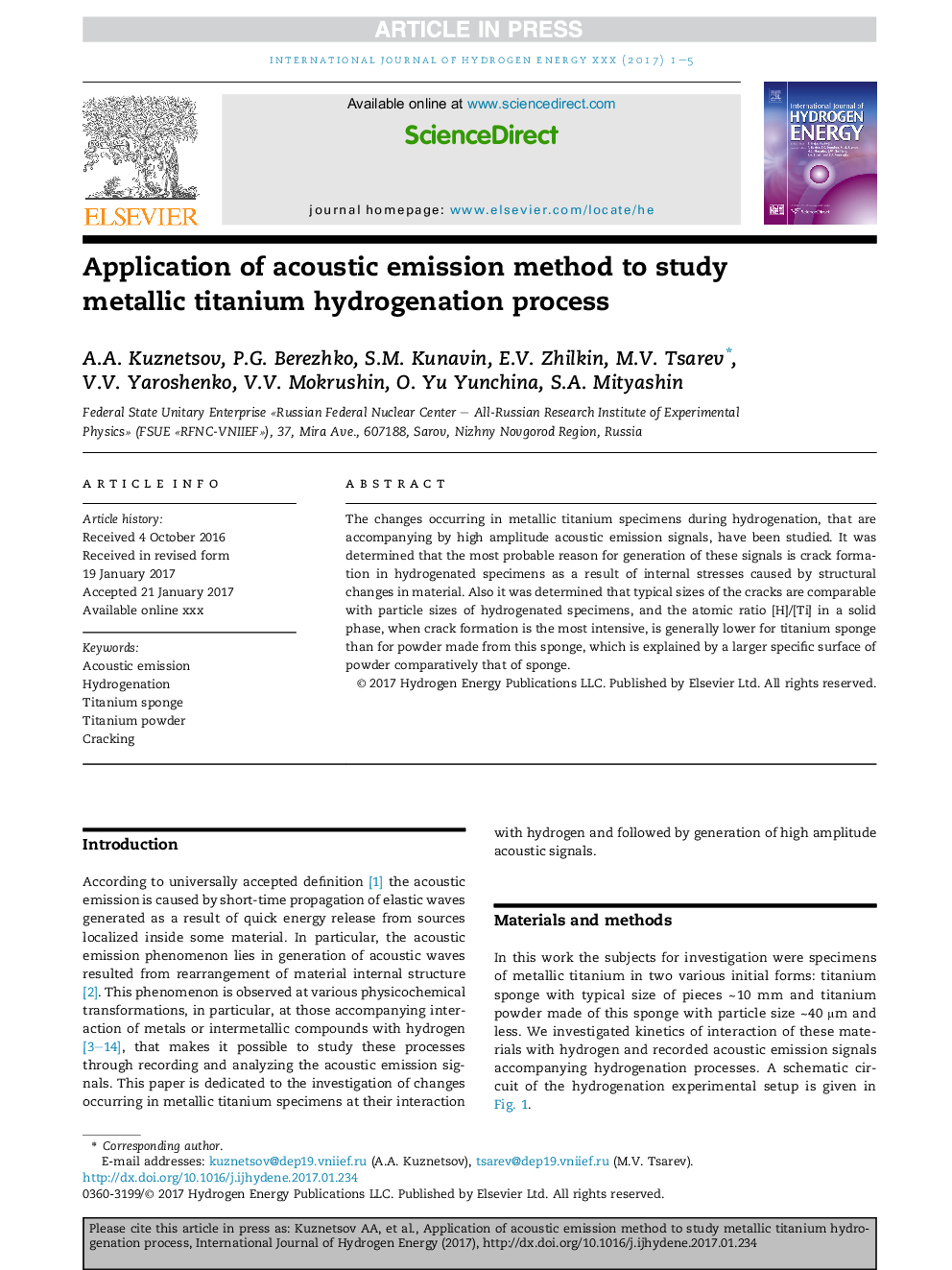| Article ID | Journal | Published Year | Pages | File Type |
|---|---|---|---|---|
| 5145501 | International Journal of Hydrogen Energy | 2017 | 5 Pages |
Abstract
The changes occurring in metallic titanium specimens during hydrogenation, that are accompanying by high amplitude acoustic emission signals, have been studied. It was determined that the most probable reason for generation of these signals is crack formation in hydrogenated specimens as a result of internal stresses caused by structural changes in material. Also it was determined that typical sizes of the cracks are comparable with particle sizes of hydrogenated specimens, and the atomic ratio [H]/[Ti] in a solid phase, when crack formation is the most intensive, is generally lower for titanium sponge than for powder made from this sponge, which is explained by a larger specific surface of powder comparatively that of sponge.
Related Topics
Physical Sciences and Engineering
Chemistry
Electrochemistry
Authors
A.A. Kuznetsov, P.G. Berezhko, S.M. Kunavin, E.V. Zhilkin, M.V. Tsarev, V.V. Yaroshenko, V.V. Mokrushin, O. Yu Yunchina, S.A. Mityashin,
